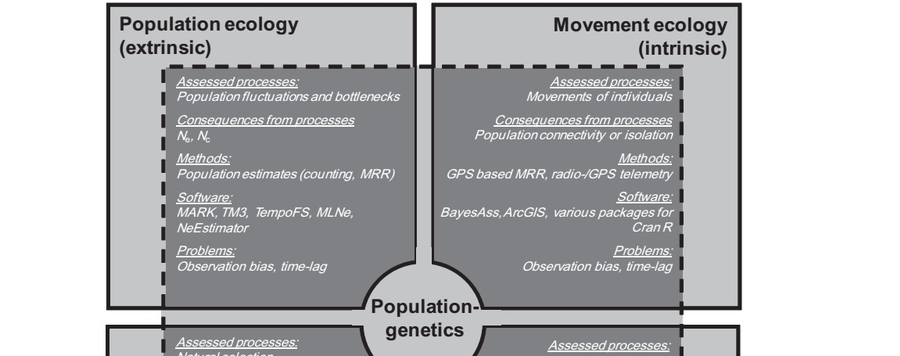
Population genetics revisited
Population genetic research has transformed from the study of genetic structures into a much wider and highly multidisciplinary research field. In this contribution, we outline the limitations of classic population genetic data and highlight the potential of combining molecular data with additional environmental, ecological and biological data sets in multidisciplinary approaches. The combination of data sets from various fields allows a more comprehensive understanding of extrinsic and intrinsic evolutionary processes affecting populations such as the distinction between genetic drift and natural selection. The integration of population size estimates and demographic dynamics as well as individual behaviour (embracing aspects like dispersal behaviour) allows for testing of adaptations to local environments and understanding time-lags frequently observed in molecular data. Modelling approaches are integrated at increasing rates into population genetic research to identify potential barriers and corridors. In our review, we therefore highlight multiple synergistic effects when combining population genetic data with morphological, ecological, behavioural data and modelling. We outline strengths and limitations and indicate future possibilities and challenges.





